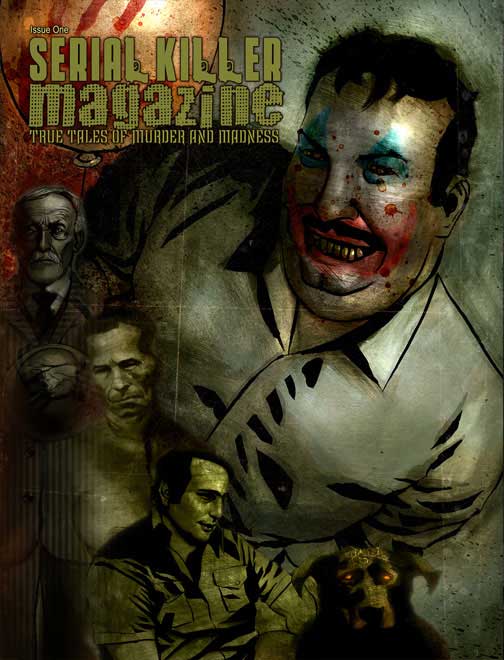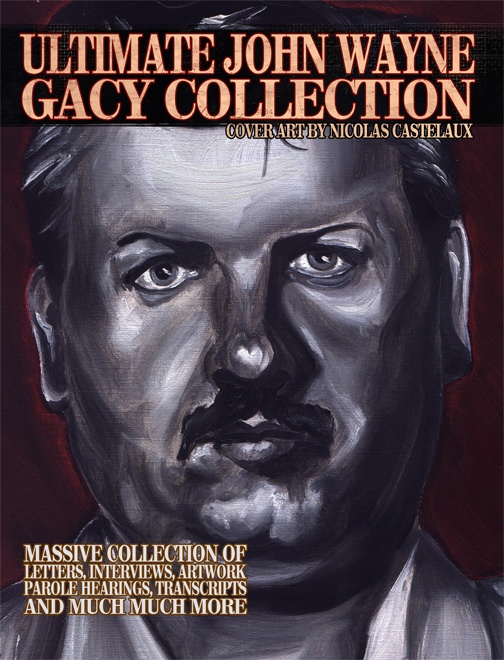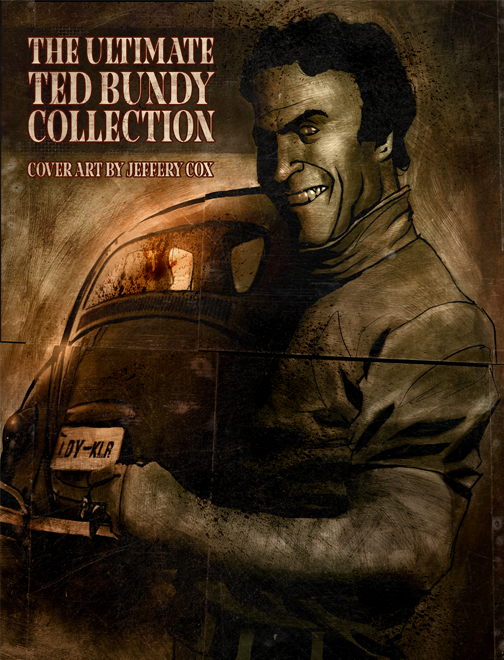SERIAL KILLER
A serial killer is a person who kills three or more people in three or more separate events over a period of time including an "emotional cooling-off" period in between the homicides. The cooling-off period may last days, weeks, months, or even years. Many serial killers are psychopaths, considered to have a personality disorder and not psychosis, and thus appear to be quite normal and often even charming, a state of adaptation which Hervey Cleckley calls the "mask of sanity." There is sometimes a sexual element to the murders. The murders may have been completed/attempted in a similar fashion and the victims may have had something in common, for example occupation, race, sex, etc.
The term serial killer is widely believed to have been coined either by FBI agent Robert Ressler or by Dr. Robert D. Keppel in the 1970s (the credit for the term is disputed). Serial killer entered the popular vernacular in large part due to the well-publicized crimes of Ted Bundy and David Berkowitz in the middle years of that decade.
Psychology and development
Many noted serial killers come from dysfunctional backgrounds. Frequently they were physically, sexually, or psychologically abused as children and there is often a correlation between their childhood abuse and their crimes.
Serial killers are specifically motivated by a variety of psychological urges, primarily power and sexual compulsion. They often have feelings of inadequacy and worthlessness, sometimes owing to humiliation and abuse in childhood and/or the pressures of poverty and low socioeconomic status in adulthood, and their crimes compensate for this and provide a sense of potency and often revenge, by giving them a feeling of power, both at the time of the actual killing and afterwards. The knowledge that their actions terrify entire communities and often baffle police adds to this sense of power. This motivational aspect separates them from contract killers and other multiple murderers who are motivated by profit. For example, in Scotland during the 1820s, William Burke and William Hare murdered people in what became known as the "Case of the Body Snatchers." They would not count as serial killers by most criminologists' definitions, however, because their motive was primarily economic.
The element of fantasy in a serial killer's development is extremely important. They often begin fantasizing about murder during or even before adolescence. Their fantasy lives are very rich and they daydream compulsively about domination, submission, and murder, usually with very specific elements to the fantasy that will eventually be apparent in their real crimes. Others enjoy reading stories or seeing photographs in magazines featuring rape, torture and murder. In some cases, however, these traits are not present.
Some serial killers display one or more of what are known as the "MacDonald triad" of warning signs in childhood. These are:
* Fire starting, or arson invariably for the thrill of destroying things, for gaining attention, or for making the perpetrator feel more powerful.
* Cruelty to animals (related to "zoosadism"). Many children may be cruel to animals, such as pulling the legs off spiders, but future serial killers often kill larger animals, like dogs and cats, and frequently for their solitary enjoyment rather than to impress peers.
* Bed wetting beyond the age when children normally grow out of such behavior.
This triad, developed in 1963, has been called into question by other researchers.[citation needed] For example, many children are fascinated by fire as they are fascinated by other natural phenomena at young ages (lightning, floods, etc.). The fact that a child can start a fire as opposed to "starting" lightning is seen to discount fire starting as an implication.
When caught and tried in a court of law in the United States, some serial killers will plead not guilty by reason of insanity. In most U.S. jurisdictions, the legal definition of insanity is still generally based upon the classic common law "right or wrong" test delineated by an English court in the 1843 M'Naghten case. The M'Naghten rule, as it is generally known in the legal profession, hinges upon whether the defendant knows the difference between right and wrong at the time of the offense. With some serial killers, extensive premeditation, combined with lack of any obvious delusions or hallucinations that would hinder the defendant's ability to elude detection after committing multiple murders, make this defense extremely difficult and almost uniformly unsuccessful in achieving a not guilty verdict. However, it does allow the defense to introduce evidence about the killer's background that would normally be deemed inadmissible (for example, a history of having been abused as a child), in hopes that some sympathy from the jury will spare the client a death sentence.
Prevalence
There have been conflicting reports as to the extent of serial murder. The FBI claimed in the 1980s that at any particular time there were roughly 35 active serial killers in the United States, meaning that the serial killers in question have committed their first murders but have not yet been apprehended for their crime or stopped by other means (e.g., suicide, a physical incapability to commit their crimes, imprisonment for a different offense, or a natural death).
This figure has often been exaggerated. In his 1990 book Serial Killers: The Growing Menace, Joel Norris claimed that there were 500 serial killers active at any one time in the United States, claiming 5,000 victims a year, a quarter of the country's homicides.
Serial murder before 1900
Although the phenomenon of serial murder is popularly regarded as a modern one, it can be traced back in history with a limited degree of accuracy.
Liu Pengli of China, cousin of the Han Emperor Jing, was made king of Jidong in the sixth year of the middle period of Jing's reign (144 BC). In the evenings, according to the Chinese historian Sima Qian, he would "go out on marauding expeditions with 20 or 30 slaves or young men who were in hiding from the law, murdering people and seizing their belongings for sheer sport." Although many of his subjects knew about these murders, "so that [they] were afraid to go out of their houses at night," it was not until the 29th year of his reign that the son of one of his victims finally sent a report to the Emperor. Eventually, "it was found that he had murdered at least 100 or more persons." The officials of the court requested that Liu Pengli be executed; however, the emperor could not bear to have his own cousin killed, and Liu Pengli was made a commoner and banished.[1]
In the 15th century, one of the wealthiest men in France, Gilles de Rais, is said to have abducted, raped and killed at least 100 young boys whom he brought to his castle as pages. The Hungarian aristocrat Elizabeth Báthory was arrested in 1610 and subsequently charged with torturing and butchering as many as 600 young girls. Like Liu Pengli, De Rais and Báthory were rich and powerful; therefore, although their crimes were known in their areas, they were not brought to justice for a long time. Chronicles of the times dealt largely with the affairs of the powerful; moreover, there was a lack of established police forces, at least in Europe, during those centuries. Therefore, there may have been many other classical or medieval serial killers who were either not identified or not publicized as well.
Thug Behram, a gang leader of the Indian Thuggee cult of assassins, has frequently been said to be the world's most prolific serial killer. According to numerous sources, he was believed to have murdered 931 victims by strangulation by means of a ceremonial cloth (or rumal, which in Hindi means handkerchief), used by his cult between 1790 and 1830, thus holding the record for the most murders directly committed by a single person in history. In total, the Thugs as a whole were responsible for approximately 2 million deaths according to Guinness World Records. The notoriety of the Thugs eventually led to the word thug entering the English language as a term for ruffians, miscreants, and people who behave in an aggressive manner towards others. Recent scholarship has cast doubt on the Thuggee cult and suggested that the British in India were confused by the vernacular use of the term by Indians and may also have used fear of such a cult to justify their colonial rule (see Kevin Rushby's Children of Kali: Through India in Search of Bandits, the Thug Cult, and the British Raj).
In his 1886 book Psychopathica Sexualis, Richard von Krafft-Ebing notes a case of serial murder in the 1870s, that of an Italian man named Eusebius Pieydagnelle who had a sexual obsession with blood and confessed to murdering six people. The unidentified killer Jack the Ripper killed at least five prostitutes (the exact number of victims is not known) in London in 1888. Those crimes gained enormous press attention because London was the center of the world's greatest power at the time, so having such dramatic murders of financially destitute women in the midst of such wealth focused the news media's attention on the plight of the urban poor and gained coverage worldwide. Joseph Vacher was executed in France in 1898 after confessing to killing and mutilating 11 women and children, while American serial killer H. H. Holmes was hanged in Philadelphia in 1896 after confessing to 27 murders.
Some historical criminologists have suggested that there may have been serial murders throughout history, but specific cases were not adequately recorded. Some sources suggest that legends such as werewolves and vampires were inspired by medieval serial killers. Sabine Baring-Gould's The Book of Werewolves is a prime example of such an idea, mixing crimes which would today clearly be called serial killings with the development of a specific mythology.
Types of serial killers
A significant number of serial killers will show certain aspects of both organized and disorganized types, although usually the characteristics of one type will dominate. Some killers descend from being organized into disorganized behavior as their killings continue. They will carry out careful and methodical murders at the start, but become careless and impulsive as their compulsion takes over their lives. Regardless, the FBI generally categorizes serial killers into the two different types.
Organized types are usually of high intelligence, have an above average IQ (105-120 range), and plan their crimes quite methodically, usually abducting victims, killing them in one place and disposing of them in another. They will often lure the victims with ploys appealing to their sense of sympathy. For example, Ted Bundy would put his arm in a fake plaster cast and ask women to help him carry something to his car, where he would beat them unconscious with a metal bar (ie. a crowbar), and spirit them away. Others specifically target prostitutes, who are likely to voluntarily go with a serial killer posing as a customer. They maintain a high degree of control over the crime scene, and usually have a solid knowledge of forensic science that enables them to cover their tracks, such as by burying the body or weighting it down and sinking it in a river. They follow their crimes in the media carefully and often take pride in their actions, as if it were a grand project. The organized killer is usually socially adequate and has friends and lovers, often even a spouse and children. They are the type who, when captured, are most likely to be described by acquaintances as "a really nice guy" who "wouldn't hurt a fly." Some serial killers go to lengths to make their crimes difficult to discover, such as falsifying suicide notes, setting up others to take the blame for their crimes, and faking gang warfare. The case of Harold Shipman, an English family doctor, is slightly unusual in that his social position and occupation was such that he was able to portray victims as having died of natural causes; between 1971 and 1998 he killed at least 250, and possibly well over 400, of his own mostly elderly patients – and until very near the end of his killings it was not even suspected that any crimes had been committed.
Disorganized types are often of low intelligence, have a below average IQ (80-95), and commit their crimes impulsively. Whereas the organized killer will specifically set out to hunt a victim, the disorganized will murder someone when the opportunity arises, rarely bothering to dispose of the body but instead just leaving it at the same place in which they found the victim. They usually carry out "blitz" attacks, leaping out and attacking their victims without warning, and will typically perform whatever rituals they feel compelled to carry out (e.g., necrophilia, mutilation, cannibalism, etc.) once the victim is dead. They rarely bother to cover their tracks but may still evade capture for some time because of a level of cunning that compels them to keep on the move. They are often socially inadequate with few friends, and they may have a history of mental problems and be regarded by acquaintances as eccentric or even "a bit creepy." They have little insight into their crimes and may even block out memories of committing the murders.
Arguably the biggest field producing serial killers is doctors, followed closely by nursing.
Motives
Regarding motives, they can be placed into five different categories, although there may be some serial killers that seem to have characteristics of more than one type.
Visionary
Contrary to popular opinion, serial killers are rarely insane or motivated by hallucinations and/or voices in their heads. Many claim to be, usually as a way of trying to get acquitted by reason of insanity. There are, however, a few genuine cases of serial killers who were compelled by such delusions.
Herbert Mullin killed 13 people after voices told him that murder was necessary to prevent California from suffering an earthquake. Mullin went to great pains to point out that California did indeed avoid an earthquake during his murder spree.
Ed Gein claimed that by eating the corpses of women who looked like his deceased mother, he could preserve his mother's soul inside his body. He killed two women who bore passing resemblances to his mother, eating one and being apprehended while in the process of preparing the second woman's body for consumption. He also used the flesh of exhumed female corpses to fashion a "woman suit" (as well as various other household adornments, such as curtains and lamp shades) for himself so that he could "become" his mother. After his arrest he was placed in a mental institution for the rest of his life.
David Berkowitz claimed that his neighbor's dog had forced him to kill after it had been possessed by a demon.
Missionary
So-called missionary killers believe that their acts are justified on the basis that they are getting rid of a certain type of person (often prostitutes or members of a certain ethnicity), and thus doing society a favor. Gary Ridgway and Aileen Wuornos are often described as missionary killers. In Wuornos' case, the victims were not prostitutes, but their patrons. John Bodkin Adams, meanwhile, was a British fundamentalist Christian and a member of the Plymouth Brethren. His rich, non-Christian victims were killed partly in order to redistribute their wealth to people Adams considered more "deserving". Missionary killers differ from other types of serial killer in that their motive is generally non-sexual.
Hedonistic
This type kills for the sheer pleasure of it, although what aspect they enjoy varies. Yang Xinhai's post-capture statement is typical of such killers' attitudes: "When I killed people I had a desire sexual excitement. This inspired me to kill more. I don't care whether they deserve to live or not. It is none of my concern". Some killers may enjoy the actual "chase" of hunting down a victim more than anything, while others may be primarily motivated by the act of torturing and abusing the victim while they are alive. Yet others, like Jeffrey Dahmer, may kill the victim quickly, and then indulge in necrophilia or cannibalism with the body. Usually there is a strong sexual aspect to the crimes, even if it may not be immediately obvious; some killers obtain a surge of excitement that is not necessarily sexual, such as David Berkowitz, who got a thrill out of shooting young couples in cars at random and then running away without ever physically touching the victims.
Gain motivated
Most criminals who commit multiple murders for material ends (such as Mafia hit men) are not classed as serial killers, because they are motivated by economic gain rather than psychopathological compulsion. There is a fine line separating such killers, however. For example, Marcel Petiot, who operated in Nazi-occupied France, could be classified as a serial killer. He posed as a member of the French Resistance and lured wealthy Jewish people to his home, claiming he could smuggle them out of the country. Instead he murdered them and stole their belongings, killing 63 people before he was finally caught. Although Petiot's primary motivation was materialistic, few would deny that a man willing to kill dozens of people simply to acquire a few dozen suitcases of clothes and jewelry was a violent sociopath.
Power and control
This is the most common serial killer. Their main objective for killing is to gain and exert power over their victim. Such killers are sometimes abused as children, leaving them with feelings of powerlessness and inadequacy as adults. Often they indulge in rituals that are linked, often very specifically, to forms of abuse they suffered themselves. Many power/control-motivated killers sexually abuse their victims, but they differ from hedonistic killers in that rape is not motivated by lust but as simply another form of dominating the victim.
Serial killers in popular culture
Serial killers have been featured in many novels, movies, songs, comic books, true crime, video games, and other media. Films such as Psycho, Peeping Tom, the Halloween series, and The Silence of the Lambs have featured serial killers as villains, antiheroes, and even protagonists. Fictional serial killers such as Norman Bates, Michael Myers, and Hannibal Lecter have become some of the most famous, popular characters in modern popular culture.
Serial killer memorabilia and serial killer lore is a subculture revolving around the legacies of various infamous and notorious serial killers. While memorabilia is generally confined to the paintings, writings, and poems of infamous killers, a market has expanded in recent years with serial killer encyclopedias, trading cards, and action figures. Some of the best known articles of serial killer memorabilia include the clown paintings of John Wayne Gacy and the poetry of Jack Unterweger.






















